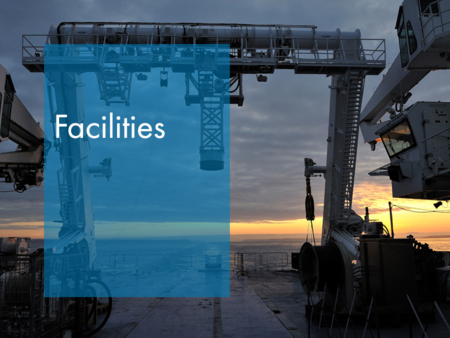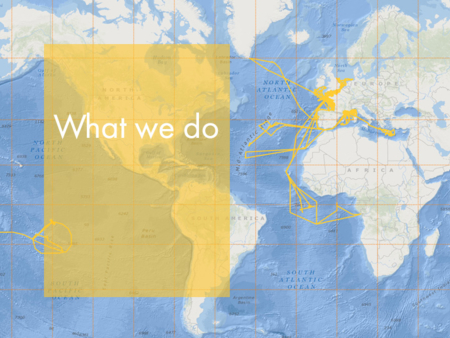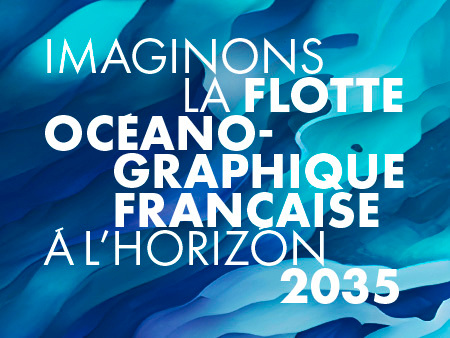The first step of the process, in order to obtain a ship of the French Oceanographic Fleet or access one of the ships of an OFEG member country which has an agreement with IFREMER, involves replying to a national call for proposals via the Cruise management system, SGC (https://sgc.flotteoceanographique.fr/).
2 years before the cruise.
The second step involves the examination of cruise proposals by the assessors of each scientific discipline during a meeting of the National Committee of the Deep-Sea Fleet (CNFH).
Subsequent to this assessment by the committees, the potential projects are ranked according to their scientific interest (for example, “scheduled first”, “not scheduled”, “unsuitable”, etc.).
2 years before the cruise
During the third step the French Oceanographic Fleet establishes the schedule of its ships and heavy equipment. It releases, with the approval of the executive committee, the programme on December of the year preceding the cruises (year N-1). This programme takes into consideration the CNFH’s rankings and other parameters, such as:
- Availability of the equipment, the ships and the technicians needed for its deployment.
- Budgetary, technical and logistical imperatives.
- Calendar imperatives expressed by mission leaders, when they are fully justified.
- Optimization of transit times between two cruises.
- Safety aspects.
- Interactions with the coastal fleet.
1 year before the cruise.
In accordance with the protocol in force, when the mission leader is informed that their cruise has been scheduled, he must acquaint themselves with various rules and inform all the members of the scientific team who will be embarking.
These rules concern:
- Medical aptitude to embark.
- The required physical aptitude for diving in a submersible.
- Safety regulations (equipment, chemical products, radioelements, protection, etc.).
- Rights and obligations in matters of archiving and distributing data acquired aboard the ships.
- Rules for communication and image rights.
- Mission leader’s expected role aboard ship.
- Control of noise-related risks for marine mammals.
- Information concerning the dispatch of equipment and containers to IFREMER mission leaders.
- APA rules.
12 months before the cruise
The mission leader must submit in writing to the French Oceanographic Fleet one or several requests for authorization to undertake works in foreign waters.
The French Oceanographic Fleet sends the applications to the French Ministry of Europe and Foreign Affairs (MEAE) for submission to the competent authorities of the country or countries concerned.
At least 8 months before the start of the cruise.
Forms for working in foreign waters are available: Request to undertake works in the waters of other countries
The sixth step involves preparing the cruise. It is organized as follows:
Mission leader drafts the preparation dossier
- and submits it to the French Oceanographic Fleet three months before the start of the cruise.
- Technical manager (Genavir) organizes a meeting to prepare the cruise and drafts the subsequent report. Convened to the meeting are the mission leader, the operating institution and their colleagues.
- Transmission to DFO_campagnes@flotteoceanographique.fr the "committement letter", of the mission leader. In case of missing, 3 month before the mission, the mission could be canceled.
Once the cruise has been achieved, the mission leader files a Cruise report (English version ).
It must be filed before leaving the ship by email to: dfo_campagnes@flotteoceanographique.fr.
It includes the following sections:
- End of Cruise Evaluation Sheet (FEFC) to be submitted and signed by the captain.
- Cruise summary report (CSR) for the SISMER, to be filled in via the cruise management system, SGC (https://sgc.flotteoceanographique.fr/).
- End of Cruise Information Sheet.
- Preliminary cruise report (PCR), to be filled in via the SGC (https://sgc.flotteoceanographique.fr/).
- Confidential Report to the management of the oceanographic Fleet (DFO), if necessary.
- Confidential Report for technical managers, if necessary.
- Report on the use of radioelements.
- Report on the use of chemical products and fume hoods.
- Equipment Loss Report.
Before leaving the ship
Note:
At the end of the cruise and in the case of works in international exclusive economic zones (EEZ), international rules (see the United Nations guideline (The law of the sea) – Marine Scientific Research, article 249, page 63) require the following:
- Submit a preliminary cruise report (see PCR above). The report is sent to the DFO which forwards it to the authorities of the EEZ concerned via diplomatic channels (MEAE).
- Next the final results and conclusions of the scientific works resulting from the cruise are submitted in a suitable format to the DFO which forwards them to the authorities of the EEZ concerned via official diplomatic channels (MEAE). In the case of special requests in the document authorizing the works, there may also be requests for samples, data and even for assistance in processing and interpreting such data.
These submissions are obligatory and important because they are a condition for obtaining authorizations for works in the same EEZs in the future:
- Report on the use of radioelements (for IFREMER and INSU ships).
- Report on the use of chemical products and fume hoods (for IFREMER ships; chemical products for INSU ships).
- Equipment Loss Report.
- Survey on the use of cruise results.
Note that the End of Cruise Evaluation Sheet must also be signed by the captain or the OPEXO at the end of the cruise.
The submission of an scientific reporting cof the cruise is necessary to justify the quality of the science operated.
This report must be submitted no later than 4 years after the cruise.
Special case of teaching missions whose report is to be submitted 1 year after the cruise.
In accordance with the cruise report dossier, drafting and submission of the use of cruise results form, via the SGC.
Cruise management system, SGC: https://sgc.flotteoceanographique.fr/
An extranet account is required and could be ask to : sgc@flotteoceanographique.fr.
Instruction manual : https://sgc.flotteoceanographique.fr/html/help/fiches-valorisation.pdf
For any questions related to inputting into SGC, please contact us at: sgc@flotteoceanographique.fr
1-4 years after




